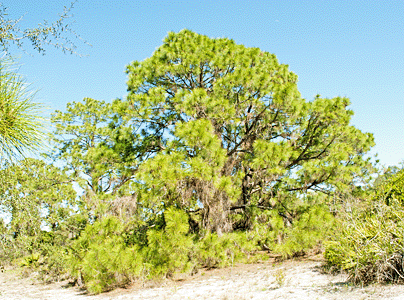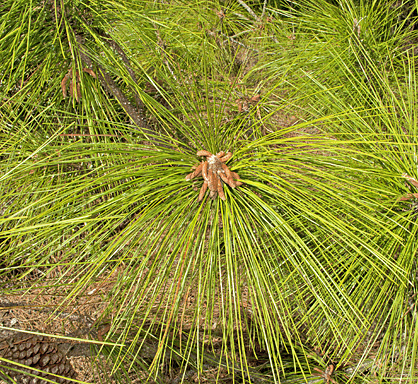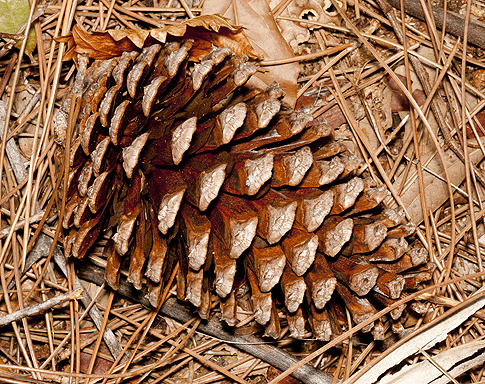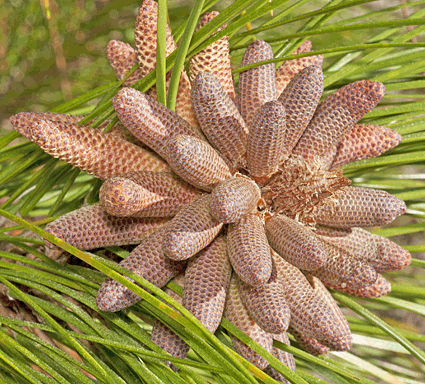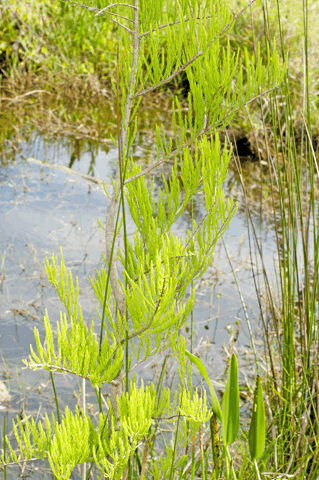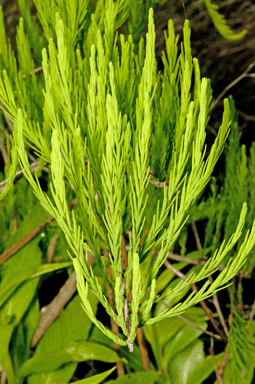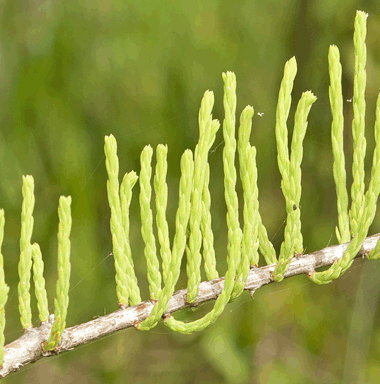Coniferophytes (Conifers) in the Christopher B. Smith Preserve
Coniferophyte Characteristics: Conifers range is size from shrubs to very large trees. Their leaves are needle or scale-like. As a conifer ages, its stems continue to expand in width and length. Older stems and roots become woody. Conifers reproduce by seeds, but the seeds do not have shells like magnoliophytes (flowering plants). Instead, the seeds are naked inside cones.
During the Mesozoic Era (time of the dinosaurs), conifers dominated the earth.
Interactions in the Smith Preserve: Like other plants, conifers convert energy of sunlight to energy other organisms can use. The conversion process is photosynthesis and the energy conifers produce is distributed to animals through the food web. Also during photosynthesis, conifers produce oxygen. In addition, conifers provide habitat for other organisms.
Phylum |
Family |
Species Name |
Common Name |
Coniferophyta |
Pinaceae |
Pinus elliottii densa |
|
Coniferophyta |
Cupressaceae |
Taxodium distichum |
Pinus elliottii densa Southern Florida Slash Pine
|
Taxodium distichum Bald Cypress
|

